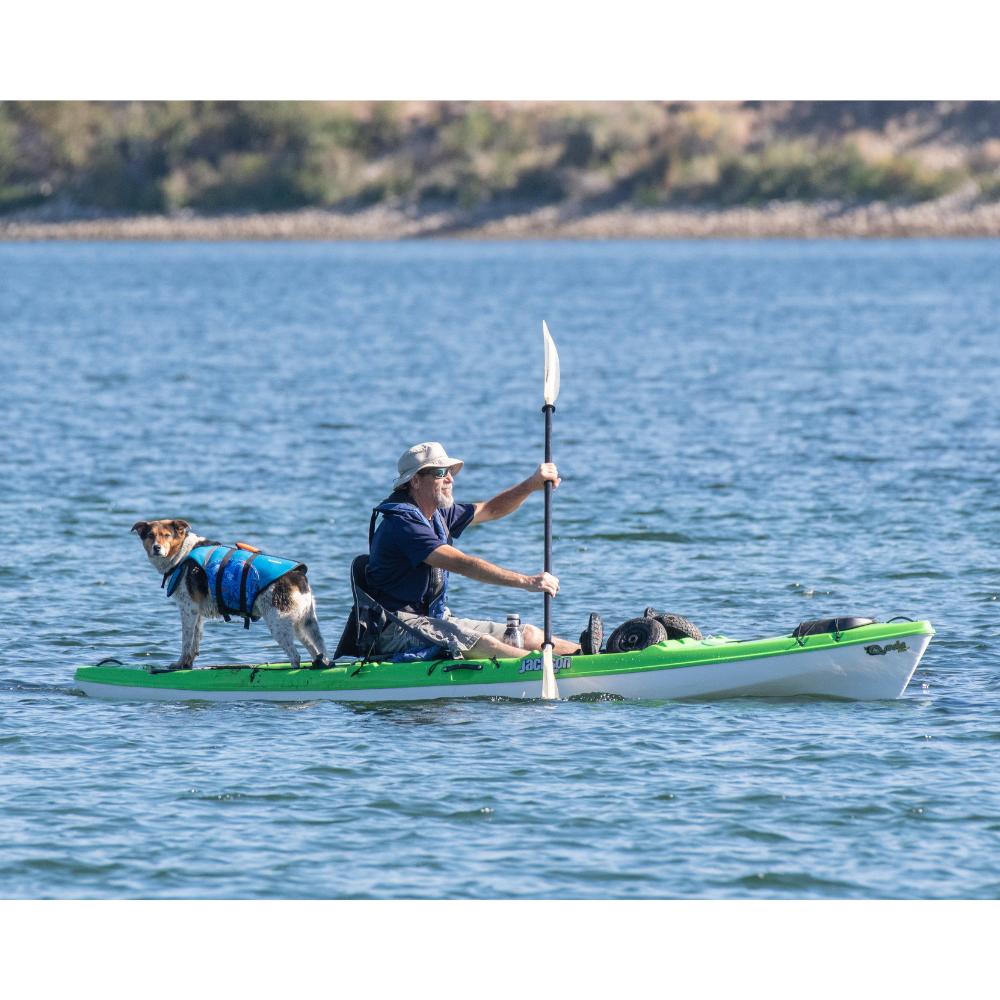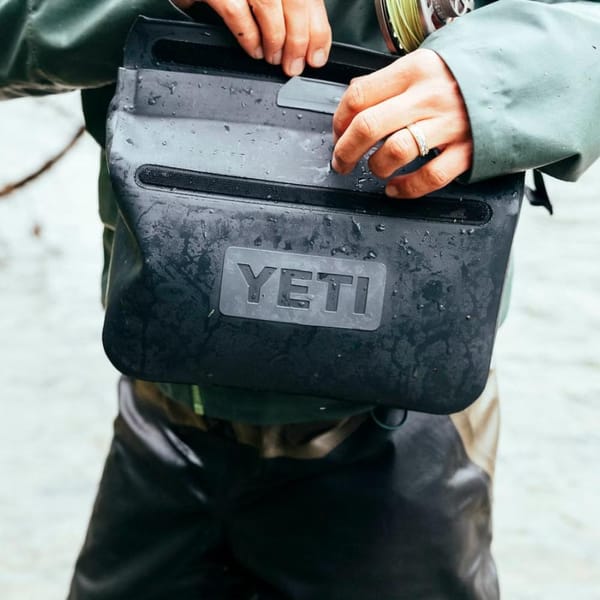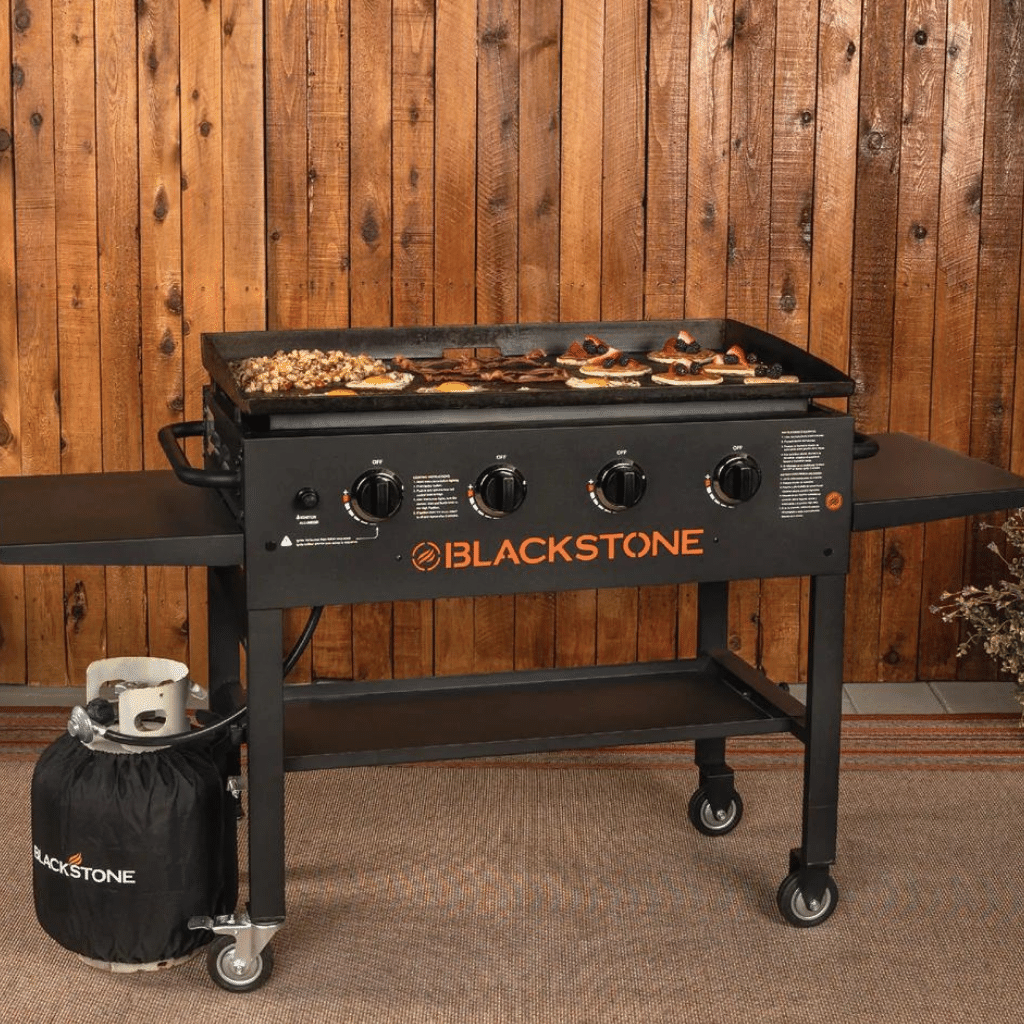Kayaking with your dog can be an incredibly rewarding experience, offering a unique way to bond with your furry friend while enjoying the great outdoors. However, it's not as simple as just bringing your dog along for the ride. To ensure a safe and enjoyable trip for both you and your canine companion, it's important to be prepared and know the best practices for kayaking with dogs.
Key Takeaways:
- Preparation is Key: Before hitting the water, ensure your dog is comfortable with the kayak and water, and is trained to follow basic commands.
- Safety First: Always equip your dog with a life vest and bring along a first aid kit.
- Choose the Right Gear: Selecting the best dog-friendly kayak and accessories will make the experience more enjoyable for you and your pet.
Getting Your Dog Acquainted with Kayaking
Before you even think about heading out onto the water, it's crucial to get your dog comfortable with the kayak. Start by introducing your dog to the kayak at home or in a familiar environment. Let them sniff around and explore the kayak while it's stationary. Positive reinforcement with dog treats can help create a positive association with the kayak.
Training your dog to sit calmly in the kayak is also essential. Practice having your dog sit on top kayaks or sit inside kayaks, depending on what you have. This will help them understand where they need to be when you're out on the water. For larger dogs, this step is especially important to ensure they can sit comfortably without tipping the kayak.
Choosing the Right Kayak
When selecting the best kayaks for your aquatic adventures with your dog, consider the size and temperament of your pet. A tandem kayak or a two-person kayak with adjustable padded seats might offer more space for a larger dog, while a single person kayak might suffice for a small dog. Sit on top kayaks are generally recommended for dogs because they often have more room and are easier for dogs to get in and out of.
Inflatable kayaks like the Sea Eagle with aluminum ribs can also be a good option as they are often more stable and provide a shallow entry point, which is great for dogs. Look for kayaks with features like marine traction tape for added grip and a sturdy handle to help lift your dog aboard.
Training Your Dog for Kayaking
Training your dog to follow commands is crucial for kayaking safety. Your dog should be able to follow basic commands such as "sit," "stay," and "come." This will help you manage their movements and ensure they stay safe on the water. It's also important to teach your dog not to jump ship, as dog jumps can be dangerous and can capsize the kayak.
Use positive reinforcement to train your dog to ignore exciting distractions like wildlife or other boats. This will help keep them focused on you and less likely to cause a disturbance that could lead to an accident.
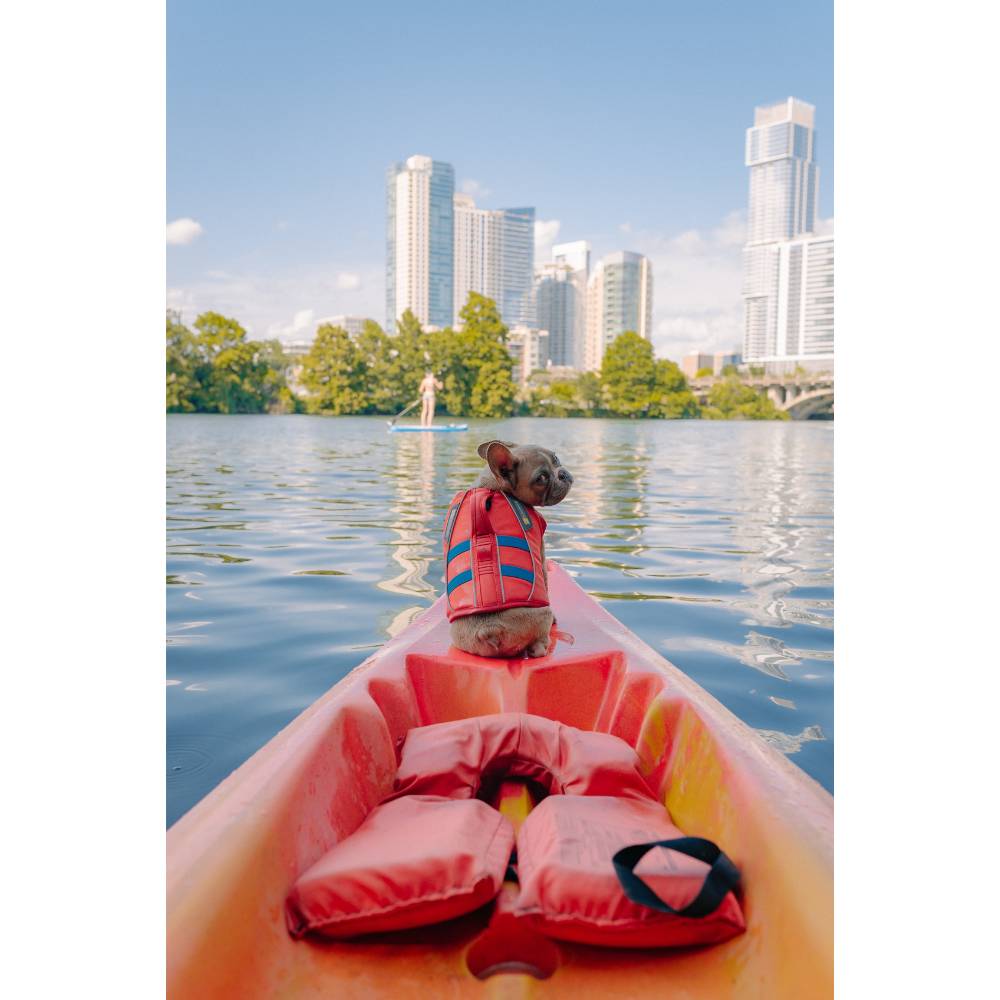
Safety Measures for Your Pooch
Safety should always be your top priority when kayaking with your dog. A well-fitted life vest is essential, even if your dog is a good swimmer. The life vest should have a sturdy handle so you can easily pull your dog out of the water if needed. Additionally, pack a first aid kit tailored for dogs in case of any injuries.
It's also wise to choose calm waters for your first few kayaking trips with your dog. Calm waters will help your dog tolerate the experience better and reduce the risk of them getting scared or acting unpredictably. Selecting the Best Kayak for Your Canine Companion When embarking on the quest of how to kayak with a dog, choosing the best dog kayak is paramount. For those with a large dog, a sit on top kayak is often recommended due to its stability and open design, which provides enough room for your furry friend to lounge comfortably. These kayaks are also easier for a dog to swim back to in case of a dog jumping overboard scenario. The open deck allows for quick re-entry, making it a dog safe choice for both you and your pet.
For smaller breeds, like a border collie, a sit inside kayak might suffice, especially if your dog sits calmly. However, many dogs prefer the freedom of a sit on kayak, where they can feel the breeze and watch the world go by. Dog lovers should consider a two person kayak even when planning to paddle solo with their dog, as it offers additional space for the dog to move and a more comfortable ride. Always ensure the kayak has a stable base so that your dog follows commands without causing a tip-over.
Creating a Positive Kayaking Experience for Your Dog To ensure your dog loves the kayaking experience, it's essential to make the adventure as enjoyable as possible. Start by allowing your dog to explore the kayak on dry land, pairing it with positive reinforcement like treats and praise. This helps build a positive association with the kayak. If your dog likes to be close to you, let them sit between your legs in a sit on kayak or in the designated space in a sit inside kayak. This closeness can be reassuring for them, especially in the initial stages of kayaking together.
Incorporating tips for kayaking with a dog into your routine can greatly enhance the experience. For instance, taking frequent breaks during your adventure allows your dog to stretch, relieve themselves, and play, which keeps them excited about future trips. Always remember to equip your dog with a well-fitted personal flotation device and bring along life jackets for both of you. Safety is a top priority, and a comfortable, dog safe flotation device will ensure peace of mind for both the pet and owner.
Planning Your Route: Navigating Dog-Friendly Waters
When you decide to kayak with your dog, it's essential to plan a route that's both enjoyable and safe for your furry companion. Look for dog-friendly kayaking spots where the waters are calm and there are fewer motorized boats that could startle your pet or cause dangerous waves. Websites like BringFido can be a great resource to find the best dog-friendly kayaks and locations. Remember, the goal is to make the experience as stress-free as possible for both you and your dog, so choosing the right environment is key.
In addition to finding the right spot, consider the length of your journey. Dogs, like humans, can get tired, and it's important to gauge your dog's endurance. Start with short trips and gradually increase the distance as your dog becomes more comfortable and confident in the water. Always keep an eye on your dog's behavior and energy levels, and be ready to take breaks when needed. This will ensure that kayaking with your dog remains a fun and safe activity for both of you.
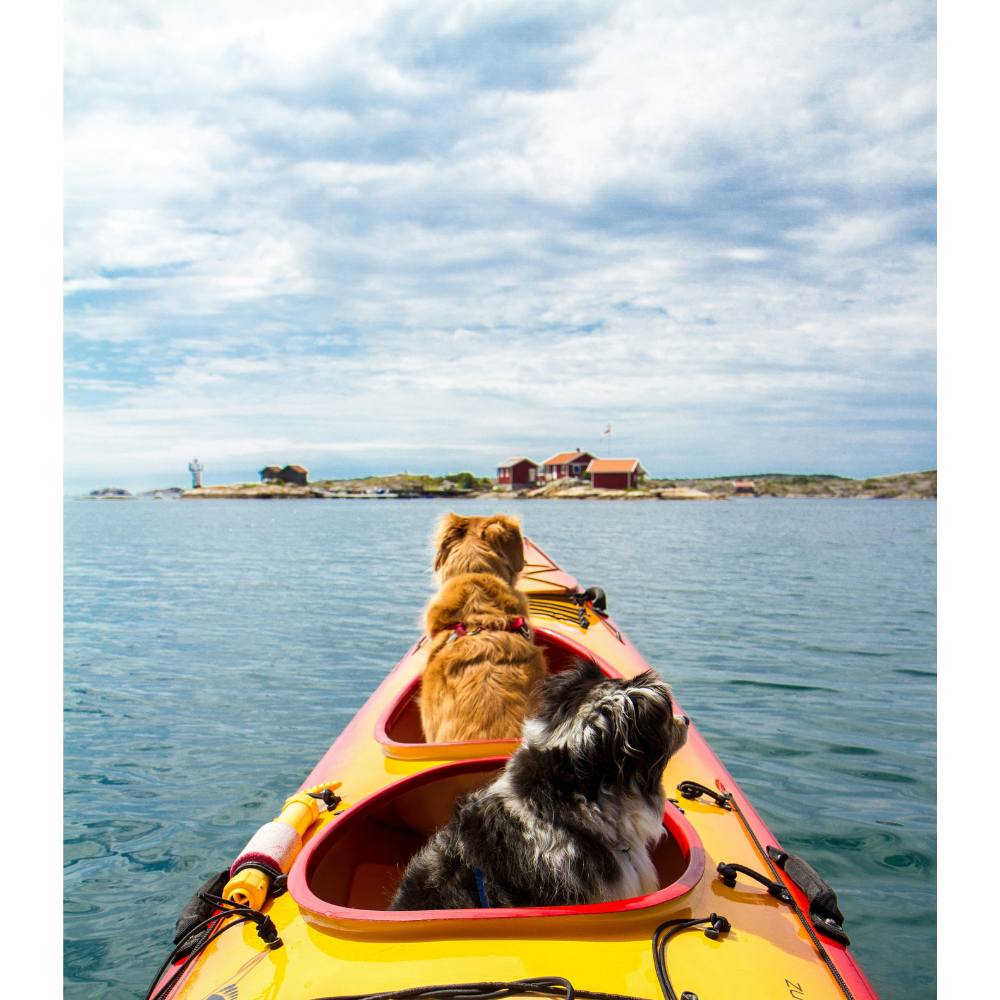
Preparing Your Dog for Swim Time
Kayaking with your furry friend is an exhilarating experience, but before you hit the water, it's crucial to ensure your dog is comfortable with swimming. Not all dogs are natural swimmers, and even breeds known for their aquatic abilities should be gradually introduced to the water. Start by choosing a calm, shallow area where your dog can feel the bottom under their paws. Encourage them with toys or treats, and always praise their efforts. Remember, the goal is to associate water with positive experiences, so keep sessions short and sweet to avoid overwhelming your pup.
When your dog shows signs of confidence in the water, you can gradually increase the depth and introduce gentle waves. This step is vital for their safety and enjoyment during kayaking adventures. Consider a dog swim vest for extra buoyancy and security, especially for breeds that are less adept at swimming. Monitor your dog's energy levels and look for signs of fatigue or anxiety. With patience and consistent practice, your dog will be paddling alongside you in no time, ready for the kayaking escapades that await!
Selecting the Best Dog-Friendly Kayaks
When planning a kayaking trip with your canine companion, choosing the best dog-friendly kayaks is essential for both comfort and safety. The ideal kayak should have enough space to accommodate your dog's size and movements. Sit-on-top kayaks are often recommended for dog owners, as they provide a stable platform and more room for your pooch to sit or lie down. Look for kayaks with a non-slip surface to ensure your dog maintains a good grip, even when wet. Additionally, kayaks with storage space are a plus, as you'll need to pack extra gear for your dog.
The weight capacity of the kayak is another critical factor to consider. It should be able to support both you and your dog, along with any additional equipment you bring along. If you have a larger breed, you might want to look into tandem kayaks, which offer more space and stability for your dog to move around without tipping the kayak. Always check reviews and possibly test out a few options with your dog before making a purchase. The best dog-friendly kayaks are those that make your adventures on the water a safe and enjoyable experience for both you and your furry friend.

Building a Positive Kayaking Relationship with Your Dog
Creating a positive association with the kayak for your dog is crucial for a successful adventure. Begin by allowing your dog to explore the kayak while it's still on land. Encourage them to get in and out of the kayak with treats and praise, making the experience enjoyable. This will help your dog follow commands more readily when you're out on the water. It's also a good time to introduce the life jacket, which is a must-have for your dog's safety. Make sure the life jacket fits well according to your dog's size, and let them wear it during these practice sessions to get used to it.
Once your dog seems comfortable around the kayak, it's time to take the training to shallow water where your dog can swim if needed. This allows your dog to feel the kayak's movements without the risk of deep water. Practice getting in and out of the kayak and paddling around in a small area. Keep these sessions short and sweet, rewarding your dog for their bravery and cooperation. With patience and consistent training, your dog will soon be ready for longer kayaking trips, and the bond you share will be stronger for it.
Packing the Essentials
When packing for your kayaking trip, remember to bring along all the essentials for your dog. This includes fresh water, a bowl, dog treats, and a dry bag to keep everything safe and dry. If you're planning a longer trip, consider bringing dog food and perhaps their own bag to carry it in.
Don't forget to pack items for your dog's comfort, such as a favorite toy or a bed. These familiar items can help your dog stay calm and feel secure during the trip.
Introducing Your Dog to Water
If your dog isn't used to being around water, you'll need to introduce them to it gradually. Start by taking them to shallow water and let them explore at their own pace. Encourage them with treats and toys, like floating sticks, to make the experience fun.
Once your dog seems comfortable in shallow water, you can start practicing getting in and out of the kayak from a shallow entry point. This will help your dog learn how to safely enter and exit the kayak without tipping it over.
The Right Accessories for a Smooth Ride
Having the right accessories can make kayaking with your dog much more enjoyable. Consider adding a skid plate to protect the kayak's hull from your dog's nails. A drain plug is also useful for getting rid of any water that splashes into the kayak, keeping both you and your wet dog more comfortable.
For added stability, look for kayaks with a closed hull design or those with three seat locations that allow you to balance the weight more effectively when paddling solo with your dog.
Handling Unexpected Situations
Even with the best preparation, unexpected situations can arise. If your dog does jump out of the kayak, it's important to stay calm and guide them back to the kayak using their life vest handle. Practice this in shallow water before heading out to deeper areas.
In case your dog gets too excited and starts to rock the kayak, training them to sit on command can help regain stability. Always keep an eye on your dog's behavior and be ready to react to keep both of you safe.
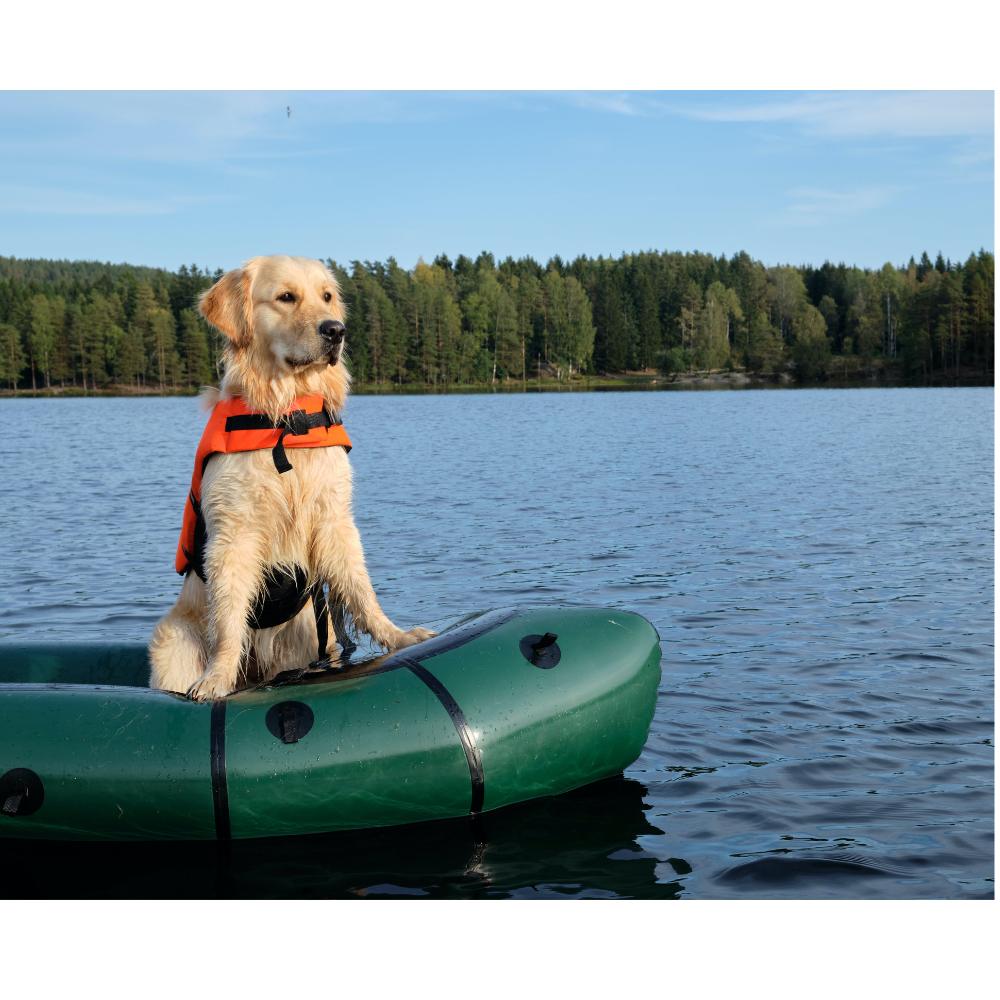
After the Adventure: Caring for Your Gear
Once your kayaking adventure is over, it's important to take care of your gear. Rinse off any saltwater, sand, or dirt from the kayak, especially if you have an inflatable kayak with delicate material. Dry everything thoroughly to prevent mold and mildew.
Inspect your gear for any damage, such as punctures or tears, and repair them before storing. Proper maintenance will ensure your kayak and accessories last for many more adventures with your dog.
Summary
Kayaking with your dog can be an amazing experience that strengthens your bond and provides both of you with exercise and fresh air. By choosing the right kayak, training your dog, and taking necessary safety precautions, you can ensure a fun and safe trip on the water. Remember to pack all the essentials, introduce your dog to the water and kayak gradually, and always be prepared for unexpected situations. With these tips and tricks, you and your canine companion are set for a pawsome kayaking adventure!
FAQ Section
What type of kayak is best for kayaking with a dog?
The best dog-friendly kayaks are usually sit on top kayaks or inflatable kayaks with plenty of space and stability. Tandem kayaks or those with adjustable padded seats are great for larger dogs, while smaller dogs might be comfortable in a single person kayak.
How do I ensure my dog's safety while kayaking?
Always have your dog wear a properly fitted life vest with a sturdy handle. Train your dog to follow basic commands and stay calm on the water. Choose calm waters for kayaking and bring a first aid kit specifically for dogs.
Can all dogs go kayaking?
Most dogs can enjoy kayaking, but it's important to consider your dog's size, temperament, and comfort with water. Some dogs may take to it naturally, while others may need more time and training to get used to the activity. Always start with short trips and gradually build up to longer excursions.



